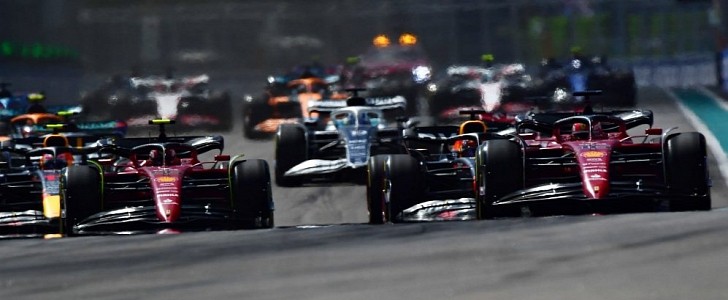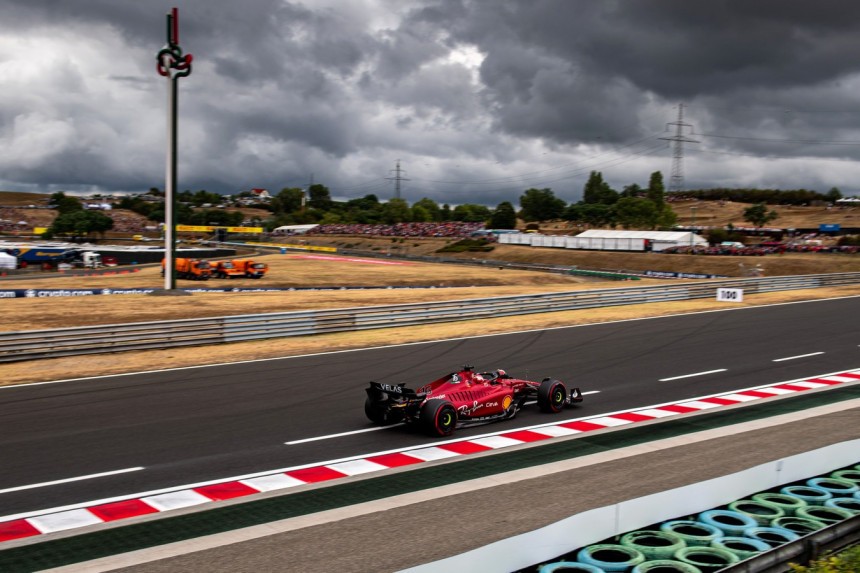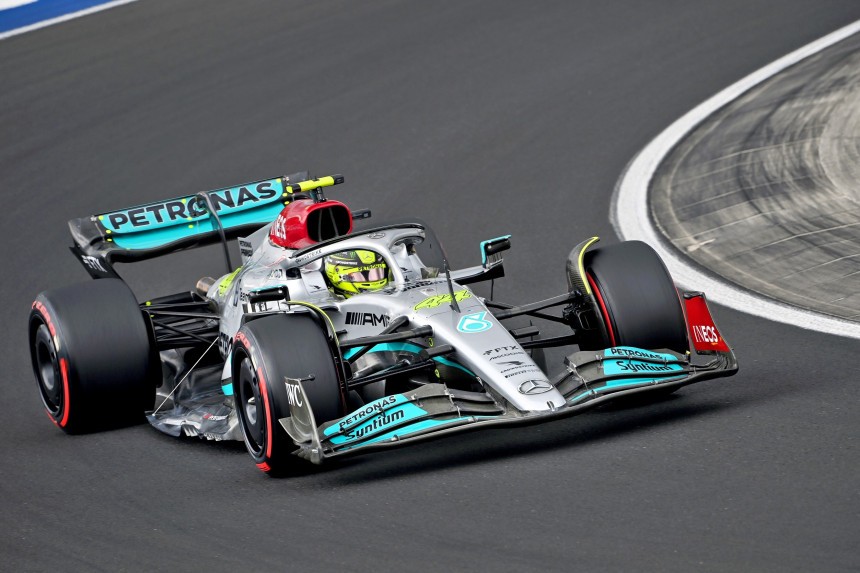Major news for F1, FIA recently approved the new power regulations for 2026, opening the door for Audi and Porsche to enter the series. After “collaborative consultation between the FIA and both incumbent and potential new power unit manufacturers”, the FIA said, they have finally reached a conclusion on the future of the motorsport.
FIA President Mohammed Ben Sulayem stated: “The FIA continues to push forward on innovation and sustainability – across our entire motor sport portfolio – the 2026 Formula 1 Power Unit Regulations are the most high-profile example of that mission.”
First of all, the engine architecture will remain the same with the V6 internal combustion engine, no surprise there. The power unit is fairly similar to the current design. They are trying to promote improved raceability by using the high-power and high-revving V6 engines, also keeping excessive performance differentiation at a low. The main focus of the new regulations is sustainability, both environmental and financial. They are the next step in reaching FIA’s goal of net zero carbon by 2030. Hopefully, with the sport enjoying huge growth recently, this move will push other motorsports to follow in their footsteps.
The new 2026 power unit will feature an increase in the deployment of electrical power of up to 50% and the fuel they will be using will be 100% sustainable.
F1 is already a very expensive sport, heavily relying on sponsorships to keep it going. It’s only normal that the FIA is trying to cut costs by giving out new mechanical regulations, but at the same time keeping competitivity in mind. The financial regulations for the power units will reduce the overall costs for competitors while also preserving the cutting-edge technology. This way, the sport is becoming much more inviting for power unit manufacturers and newcomers, just what Audi and Porsche were waiting for.
Let’s get technical! The current MGU-H (Motor Generator Unit Heat) will be removed, and the power output on the Energy Recovery Systems will be increased to 350 KW, thus almost tripling the amount of electric power produced by the current hybrid components. By having a higher proportion of electrical power, less fuel will flow to the engines, so that means less fuel will be used overall with no impact of the horsepower. To better understand, in 2013, 160 kg (about 352 lb.) of fuel were used in a Grand Prix. That decreased to 100kg (about 220 lb.) in 2020 and now, the FIA aims to lower that number to an impressive 70 kg in 2026.
The new regulations will make racing a tougher challenge for the drivers. By removing the MGU-H, turbo lag might make its way back into racing and will make the cars harder to control on corner exits. The drivers will have to work harder and smarter to time the perfect moments when to sit back and when to attack by harnessing the power unit’s new electric potential.
The FIA is also tackling porpoising and roll hoops. For those not familiar with the terms, porpoising is the aerodynamic phenomenon that F1 cars suffer when air is sucked underneath, making them bounce up and down. From this month's Belgian GP, changes will be made to re-define the stiffness requirements of the plank and skids around the thickness measurement holes on the cars. Starting from 2023, teams will have to make the following adjustments:
Roll hoops are the big T-shaped things on the roof of the car and are the first barrier (followed by the Halo) meant to protect the driver in case of a roll over. If you’ve watched the British GP, you probably saw the horrifying moment when Zhou Guanyu rolled over and slid on the track. By the end of the slide, the roll hoop was completely gone, all that was left between him and the pavement was the Halo, which had already proved its use in many accidents so far. As a consequence, again starting from 2023, the following changes surrounding safety standards will be made:
We can safely say that the FIA is keeping the sport on the right track. They are proving to be responsible and environmentally-friendly (as much as possible) with the changes they are making, while also maintaining the beauty of the sport and promoting innovation through technology.
I’m excited to see how this beautiful motorsport will evolve and how the constructors will keep up. Oh, and let’s not forget, two big players are waiting to get in, Audi and Porsche. More competition never hurt anybody, and who knows, maybe they will prove to be the next champions in the following years. Exciting times are coming!
First of all, the engine architecture will remain the same with the V6 internal combustion engine, no surprise there. The power unit is fairly similar to the current design. They are trying to promote improved raceability by using the high-power and high-revving V6 engines, also keeping excessive performance differentiation at a low. The main focus of the new regulations is sustainability, both environmental and financial. They are the next step in reaching FIA’s goal of net zero carbon by 2030. Hopefully, with the sport enjoying huge growth recently, this move will push other motorsports to follow in their footsteps.
The new 2026 power unit will feature an increase in the deployment of electrical power of up to 50% and the fuel they will be using will be 100% sustainable.
Let’s get technical! The current MGU-H (Motor Generator Unit Heat) will be removed, and the power output on the Energy Recovery Systems will be increased to 350 KW, thus almost tripling the amount of electric power produced by the current hybrid components. By having a higher proportion of electrical power, less fuel will flow to the engines, so that means less fuel will be used overall with no impact of the horsepower. To better understand, in 2013, 160 kg (about 352 lb.) of fuel were used in a Grand Prix. That decreased to 100kg (about 220 lb.) in 2020 and now, the FIA aims to lower that number to an impressive 70 kg in 2026.
The new regulations will make racing a tougher challenge for the drivers. By removing the MGU-H, turbo lag might make its way back into racing and will make the cars harder to control on corner exits. The drivers will have to work harder and smarter to time the perfect moments when to sit back and when to attack by harnessing the power unit’s new electric potential.
- The floor edges will be raised by 15mm (about 0.59 in)
- The diffuser throat height will be raised
- The diffuser edge stiffness will increase
- An additional sensor will be mandated to monitor the porpoising phenomenon more effectively
Roll hoops are the big T-shaped things on the roof of the car and are the first barrier (followed by the Halo) meant to protect the driver in case of a roll over. If you’ve watched the British GP, you probably saw the horrifying moment when Zhou Guanyu rolled over and slid on the track. By the end of the slide, the roll hoop was completely gone, all that was left between him and the pavement was the Halo, which had already proved its use in many accidents so far. As a consequence, again starting from 2023, the following changes surrounding safety standards will be made:
- A rounded top will now be required on the roll hoop, which will reduce the chance of it digging into the ground during an accident
- A change will be made to ensure a minimum height for the point of application of the homologation test
- The introduction of a new physical homologation test where the load pushes the roll hoop in the forward direction
- There will be a definition of new tests, to be carried out by calculation
We can safely say that the FIA is keeping the sport on the right track. They are proving to be responsible and environmentally-friendly (as much as possible) with the changes they are making, while also maintaining the beauty of the sport and promoting innovation through technology.
I’m excited to see how this beautiful motorsport will evolve and how the constructors will keep up. Oh, and let’s not forget, two big players are waiting to get in, Audi and Porsche. More competition never hurt anybody, and who knows, maybe they will prove to be the next champions in the following years. Exciting times are coming!




























